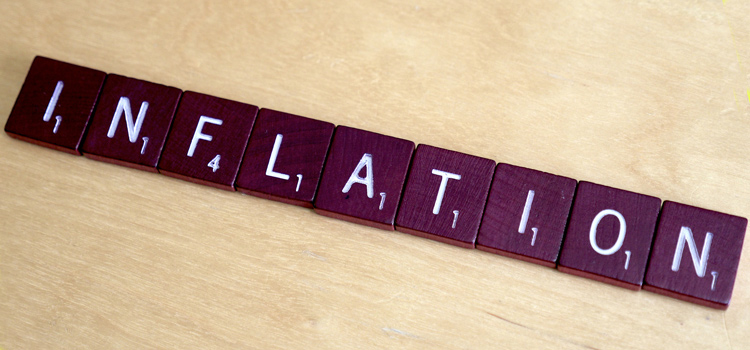
Have you ever wondered what inflation is and how it affects you?
Do you wonder why goods and services seem to be getting more expensive, and why prices increase over time?
If so, read on.
What is inflation?
Put simple, inflation is the rate of increase in prices for goods and services. The reverse, a decrease in prices, is called deflation.
Inflation is usually expressed as a percentage rate – example 3% – and represents the average increase of prices in the same goods and services one year previous.
Inflation is measured by several indexes, of which the most well-known is the Consumer Price Index (or CPI). The CPI is a list of thousands of goods and services purchased by households in Australian capital cities.
It is often referred to as a “basket of goods” as it contains a number of items we purchase. But what is exactly in this basket?
For practical reasons, the basket doesn’t contain every item bought by every household, but it does include items bought by a sample of 9,500 households in private dwellings in the eight capital cities. There are also a few guidelines around what can be included:
- Items must be representative of purchases made by households;
- Items must be identifiable and observed each period (example: 420g can of baked beans)
- Items can be items that some households never buy, such as cigarettes or alcohol.
Some examples of what is included in the CPI include:
- Cheese
- Eggs
- Coffee
- Restaurant meals
- Footwear for men, women and children
- Housing rent
- Cars
- Public transport costs
- Postal services
For a comprehensive list of what is included you can visit the government’s ABS website.
Effects of inflation
There are several effects that inflation has on the individual and the economy as a whole.
It is an indication on how quickly the price of goods and services (on average) is increasing over time.
This can easily be seen by looking at prices over time compared to what they cost today. For example, a bottle of Coke cost around 5 cents back in the 1960s, while today it costs over $3.
It also affects your income – either directly, by being linked to the pension rate, or indirectly, by affecting your purchasing power.
If your income doesn’t increase at the same level as inflation, you would suffer a wage cut in real terms as your income would no longer be able to purchase the same amount of goods it did a year ago.
This is why high inflation can be bad for consumers (and the economy) – you have to increase your income by the same amount as inflation just to keep up, and this can be difficult in times when prices are rising quickly.
Similarly, if you have savings or investments that earn less than the inflation rate, you are actually losing money in real terms.
As an example of this, if inflation was sitting at 3% and you were only earning 2.5% on your savings, then you actually end up with a 0.5% loss in real terms over a 12 month period.
Wider economy
One of the biggest impacts of inflation is that it is one of the key factors used by the Reserve Bank when setting official interest rates.
If inflation is too high, the Reserve Bank will increase interest rates to subdue demand, effectively “slowing down” the economy. And, of course, the Reserve Bank’s changes to interest rates tend to flow on to banks, credit unions, the stock and bond markets, and therefore on to the consumer.
Measures
As mentioned above, inflation can be measured by several indexes. In Australia, there are five main price indexes:
- CPI (Consumer Price Index) – measures general household inflation faced by consumer households
- SLCI (Selected Living Cost Indexes) – measures changes for selected sub-groups within the general population
- PPI (Producer Price Index) – measures the inflation when goods leave or enter production
- WPI (Wage Price Index) – measures changes in the price of labour
- DFD (Domestic Final Demand) – measures business and government purchases as well as domestic.
Various types of Inflation
To add to the confusion around inflation, there are several different types of inflation:
- Underlying inflation
- Headline inflation
- Trimmed mean inflation
Underlying inflation is more of a long-term inflation measure, and excludes items that are typically subject to temporary and volatile price moves (such as some foods and energy, like petrol).
Headline inflation takes in to account all prices across the economy, including those more volatile items.
Trimmed mean inflation is a measure of inflation where the highest and lowest pricing changes are excluded (or trimmed) before an average inflation figure is calculated.
As you can see, inflation affects all of us in one way or another as it affects product and service prices, government and banking policy, and has an effect on how much we can purchase.
Do you have a better understanding of inflation now? Still have questions? Ask them in the comments below.














Comments (0)
Add a Comment